crwdns2915892:0crwdne2915892:0
Replace a cracked rear glass panel on your Motorola Moto G6, or remove it for further disassembly.
crwdns2942213:0crwdne2942213:0
-
-
If possible, drain the battery before disassembly. When the battery is charged, there's an increased risk of a dangerous thermal event if the battery is overheated or damaged during repairs.
-
Prepare an iOpener and heat the back of the phone along its bottom edge for about two minutes, or until it's slightly too hot to touch. This will help soften the adhesive securing the rear glass.
-
-
-
Apply a suction cup to the bottom edge of the rear glass.
-
Pull up on the suction cup with firm, constant pressure to create a slight gap between the rear glass and the frame.
-
If you have trouble, apply more heat to further soften the adhesive, and try again. The adhesive cools quickly, so you may need to heat it repeatedly.
-
Insert an opening pick into the gap you created under the rear glass.
I'm stuck on this step (literally and figuratively). I've heated it pretty hot and pulled pretty hard on the suction cup, but I can't see a gap…
I used a piece of laminating plastic instead of the pick and managed to slide it in!
My back delaminated at this point. That is, the clear plastic started to come away leaving the paint layer behind. Mine is (was) the indigo blue one.
-
-
-
Slide the pick all along the bottom edge of the phone to slice through the adhesive securing the rear glass.
-
-
-
Heat the right edge of the back of the phone to soften the adhesive underneath.
-
-
-
-
Slide the pick along the right edge of the rear glass to separate the adhesive underneath.
-
-
-
Heat the top edge of the back of the phone to soften the rear glass adhesive.
-
-
-
Slide the pick all along the top edge of the phone to slice through the adhesive securing the rear glass.
-
-
-
Heat the left edge of the back of the phone to soften the adhesive underneath.
-
-
-
Slide a pick along the left edge of the phone to slice through the rear glass adhesive.
-
-
crwdns2935267:0crwdne2935267:0Tesa 61395 Tape$5.99
-
If the glass remains stuck, re-heat and slice the adhesive repeatedly as needed.
-
Lift the rear glass carefully, making sure it's fully separated from any adhesive.
-
Remove the rear glass.
When cleaning old adhesive off the back glass, be careful not to scratch the inner coating of the glass. If you scratch this coating with tweezers, it will leave visible “nicks” on the back glass.
-
Compare your new replacement part to the original part—you may need to transfer remaining components or remove adhesive backings from the new part before installing.
To reassemble your device, follow the above steps in reverse order.
Take your e-waste to an R2 or e-Stewards certified recycler.
Repair didn’t go as planned? Try some basic troubleshooting, or ask our Motorola Moto G6 Answers community for help.
Compare your new replacement part to the original part—you may need to transfer remaining components or remove adhesive backings from the new part before installing.
To reassemble your device, follow the above steps in reverse order.
Take your e-waste to an R2 or e-Stewards certified recycler.
Repair didn’t go as planned? Try some basic troubleshooting, or ask our Motorola Moto G6 Answers community for help.
crwdns2935221:0crwdne2935221:0
crwdns2935229:04crwdne2935229:0
crwdns2947412:04crwdne2947412:0
Hi William,
How would I put a new cover back on? Does it require new adhesive?
Hi Brendan,
You do not need a new adhesive. Simply place the back shell on the device, and apply pressure on all sides to seal it.
My Moto G6 has a back that is glass, which is now shattered, where can I get a replacement?
my back says it cant be removed, what do i do


















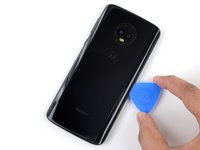





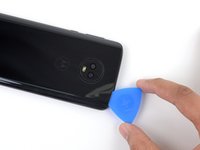
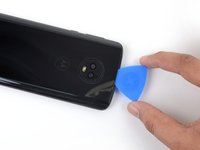
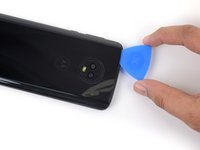




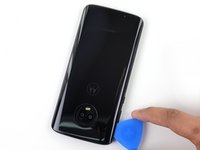
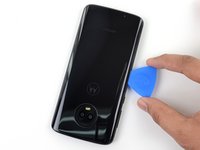
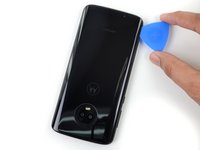



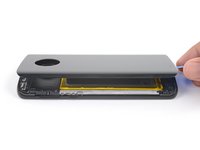


At what temperature shold the glass be heated to? My heat gun goes from 250 up to 1350.
Miles Raymond - crwdns2934203:0crwdne2934203:0
START LOW.
These plastics can be almost endlessly remelted, held at temp, etc., if done gently.
With a heat gun, I'd hesitate to go too far past 250°F/115°C too quickly until I was comfortable with the material.
Plastic WILL begin to burn and permanently deteriorate at 350-400°F or so.
Silicone can handle up to 400-500°F.
(Get a cast iron pot or pan to roughly 250°F/110°C, then invert and put a silicone cookie sheet on it to make a work surface that will make life waaaaaay easier. Preheat the device along with the pan for a few minutes, too.)
Filthy Pazuzu - crwdns2934203:0crwdne2934203:0